Intro paragraph for you to give a quick overview of this recipe, and entice the reader to continue reading because your recipe is fan-freaking-fantastic.
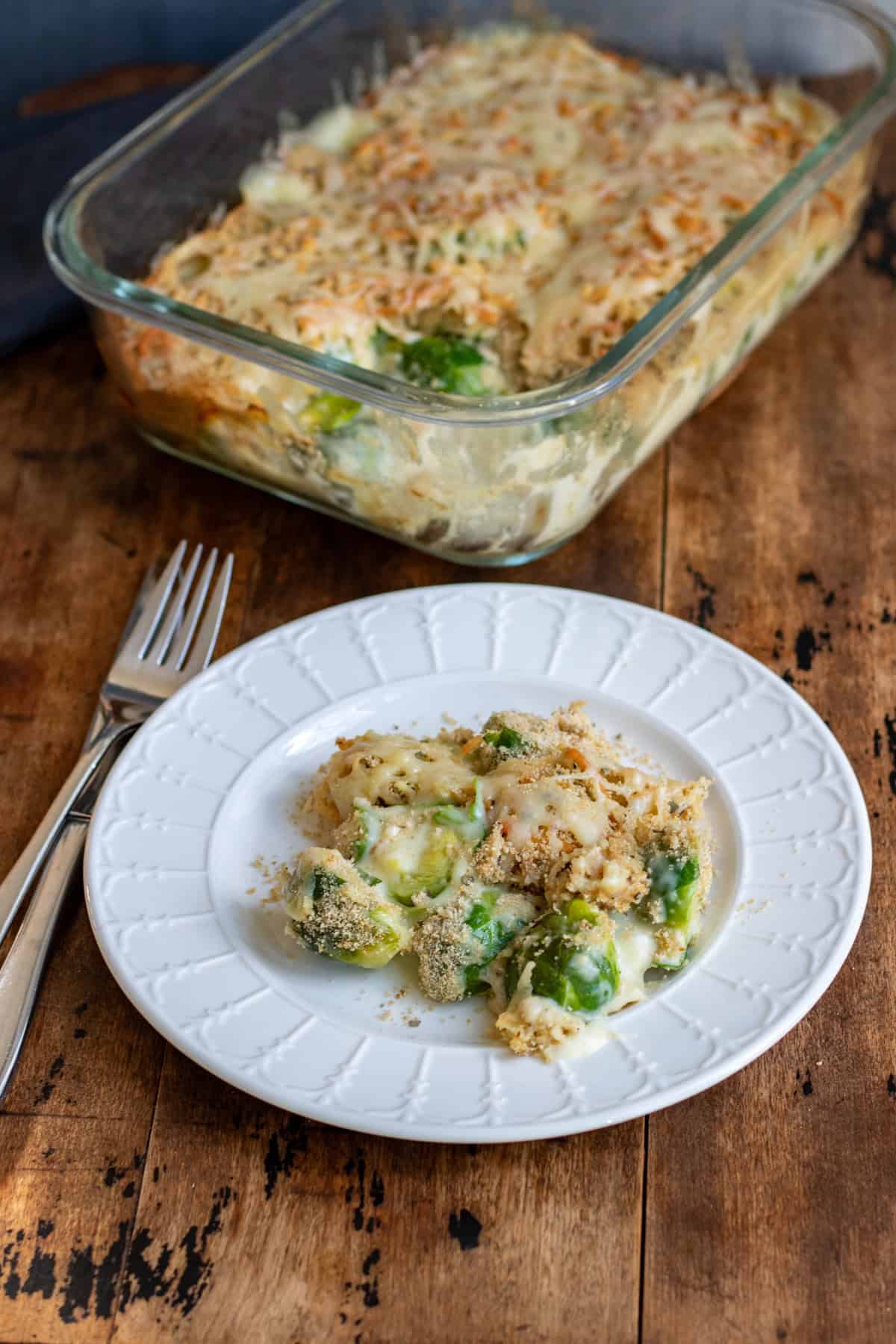
There are plenty of ways to cook Brussels sprouts, but au gratin style remains my favorite approach when I want something creamy and comforting.
Brussels Sprouts au Gratin is a simple combination of tender sprouts, cheese sauce and breadcrumbs, yet it creates a dish that feels complete on its own.
The steps are straightforward. Boil the sprouts until they soften. Make a quick cheese sauce on the stove. Combine them, then add a crunchy topping and bake!
The sprouts keep a bit of bite, while the sauce is smooth and mildly spiced with Dijon and nutmeg. The topping provides the crunch.
We love serving this side dish around the holidays, and it is a great way to introduce Brussels sprouts to someone who is unsure about them.
If you're looking for other ways to make the most of Brussels Sprout season, then be sure to try Brussels Sprout Fritters, Creamy Miso Brussels Sprouts, Honey Sriracha Brussels Sprouts, or Brussels Sprout Soup!
Jump to:
Why You'll Love This Recipe
- Brussels Sprouts au Gratin delivers a creamy, cheesy texture that appeals to both vegetable lovers and skeptics.
- The recipe uses basic pantry staples, which keeps preparation practical and budget friendly.
- Cheddar, Dijon, and nutmeg create a balanced flavor that feels cozy but still nuanced.
- This cheesy Brussels sprout casserole works well as a holiday side, especially for Thanksgiving or Christmas menus.
- It can be adapted easily with different herbs, cheeses, or toppings.
- The gratin reheats nicely, which makes it a solid make ahead option.
- It fits naturally into weeknight cooking because the steps are straightforward.
What is au Gratin?
Au gratin is a cooking method where a dish is topped with something that browns in the oven. The topping is usually cheese, breadcrumbs, or a mixture of both.
At its core, au gratin refers to two things.
• A creamy or saucy base, often including vegetables, potatoes, or pasta.
• A browned crust created under the heat of the oven.
The term comes from French cuisine and simply describes that browned, gratinated top. It is a technique rather than a specific recipe, which is why you see versions like potatoes au gratin, cauliflower au gratin, and Brussels sprouts au gratin. Try Leek au Gratin or Turnip au Gratin!

Ingredients
- Brussels sprouts. These form the body of the dish and provide a naturally nutty flavor that pairs well with creamy sauces. Smaller sprouts tend to be sweeter, but any size works as long as you trim them.
- Butter. This creates the base of the cheese sauce and helps achieve a rich flavor. Any unsalted butter works, though salted butter is fine if you adjust the seasoning at the end.
- All purpose flour. Flour thickens the sauce and gives it the creamy consistency that gratins are known for. Whole wheat flour can be substituted, though it gives the sauce a slightly darker color.
- Milk. Milk helps create a smooth white sauce. Whole milk gives the sauciest texture, but low fat milk also works if you prefer a lighter finish.
- Dijon mustard. Dijon sharpens the flavor of the cheese sauce and keeps it from tasting flat. Any mild mustard can be used instead.
- Nutmeg. A pinch of nutmeg adds warmth and depth without overpowering the dish. Freshly grated nutmeg has a stronger aroma, but jarred nutmeg is perfectly fine.
- Cheddar cheese. White cheddar melts smoothly and offers a clean, rich flavor. Yellow cheddar, Gruyère, or Fontina also work well.
- Breadcrumbs. Breadcrumbs form the crisp top layer. Panko breadcrumbs create a lighter crunch, while regular breadcrumbs offer a tighter crumb.
- Dried sage or thyme. These herbs add an earthy note to the topping. Either one works, and both complement Brussels sprouts. I like sage around Christmas particularly.
- Salt and black pepper. These season the dish from start to finish.
See the recipe card for quantities.
Instructions
Follow this step-by-step photo tutorial, then scroll down to the recipe card for the full ingredients list and method.
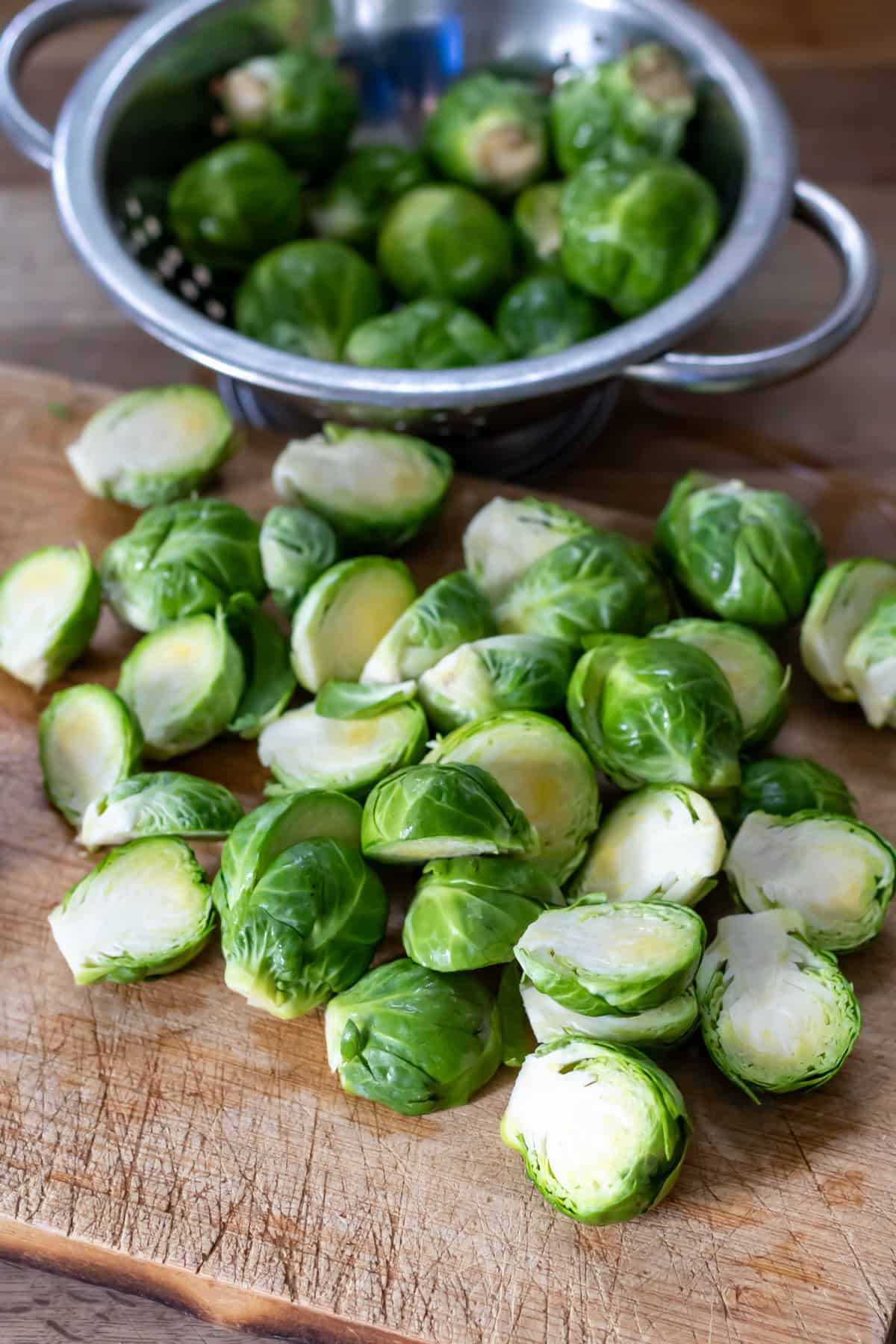
Wash the Brussels sprouts and cut away any browned leaves or base. If they're very large, cut them in half or quarters.
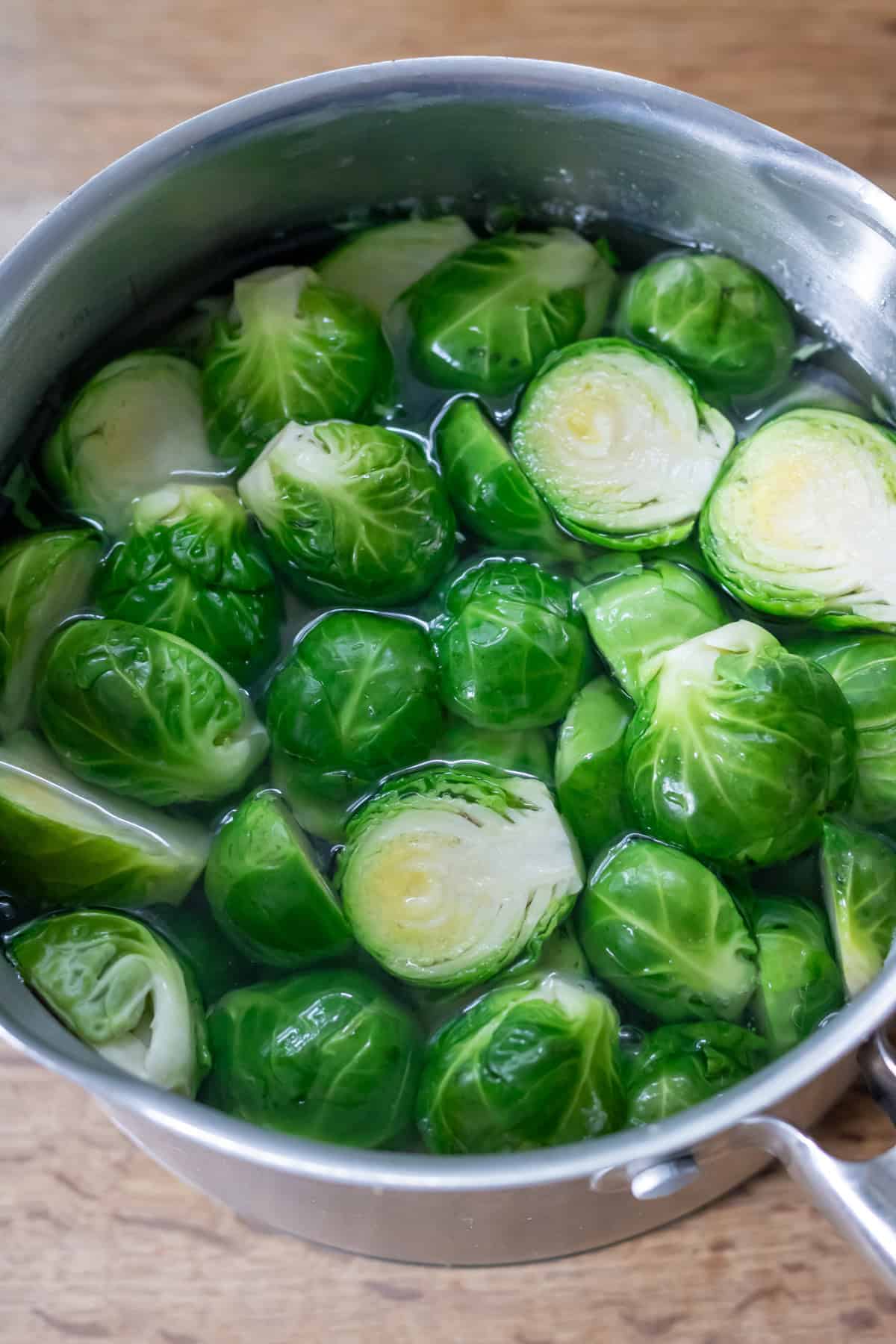
Bring a medium saucepan of water to the boil, add the Brussels sprouts, reduce the heat and simmer for 5-10 minutes or until knife tender. Drain.
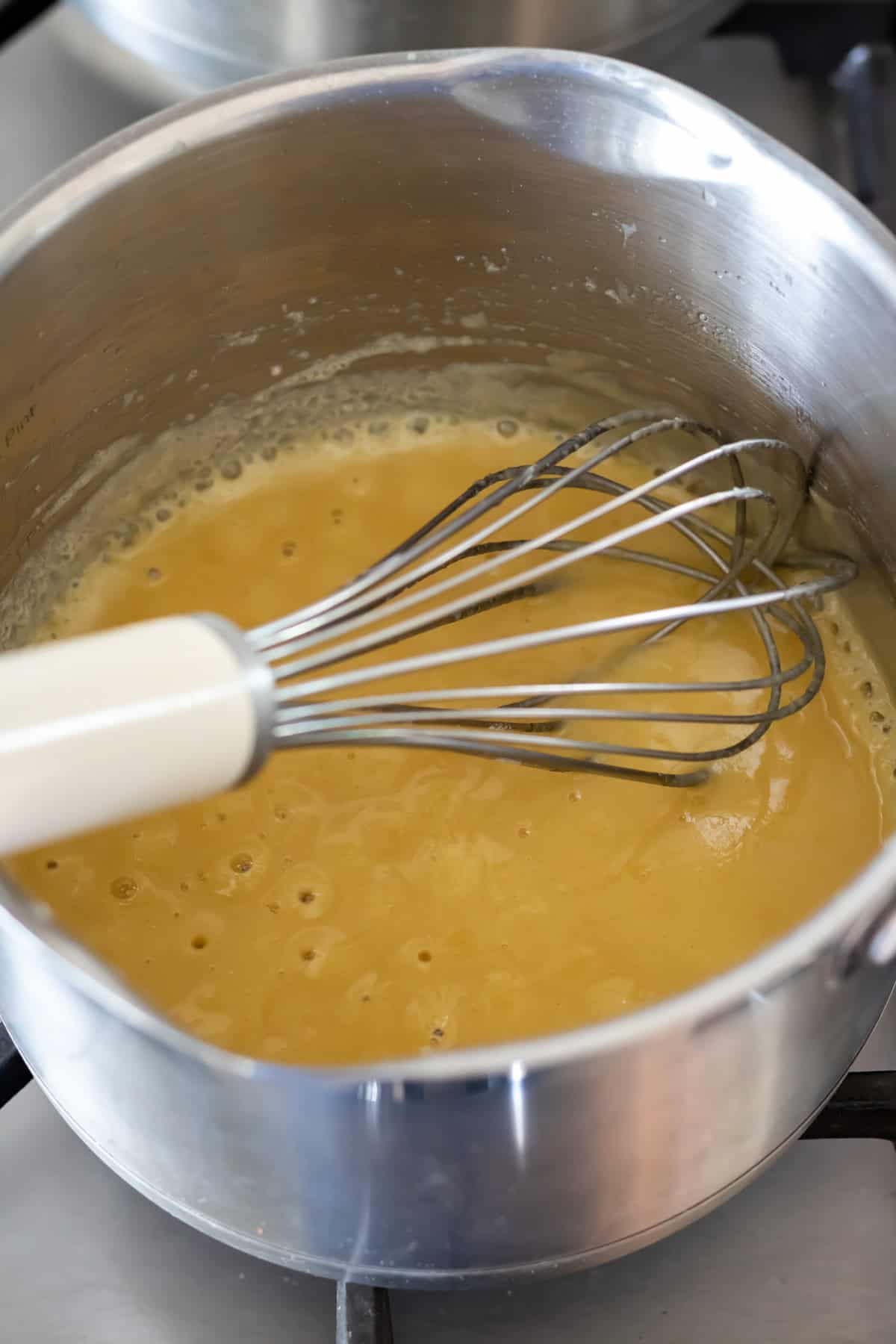
Meanwhile, for the cheese sauce, melt the butter in a medium pan, then stir in the flour and cook for a further minute.

Whisk in the milk, a little at a time, until thick and creamy.
Stir in the dijon and nutmeg and half the cheese and season with salt and pepper.
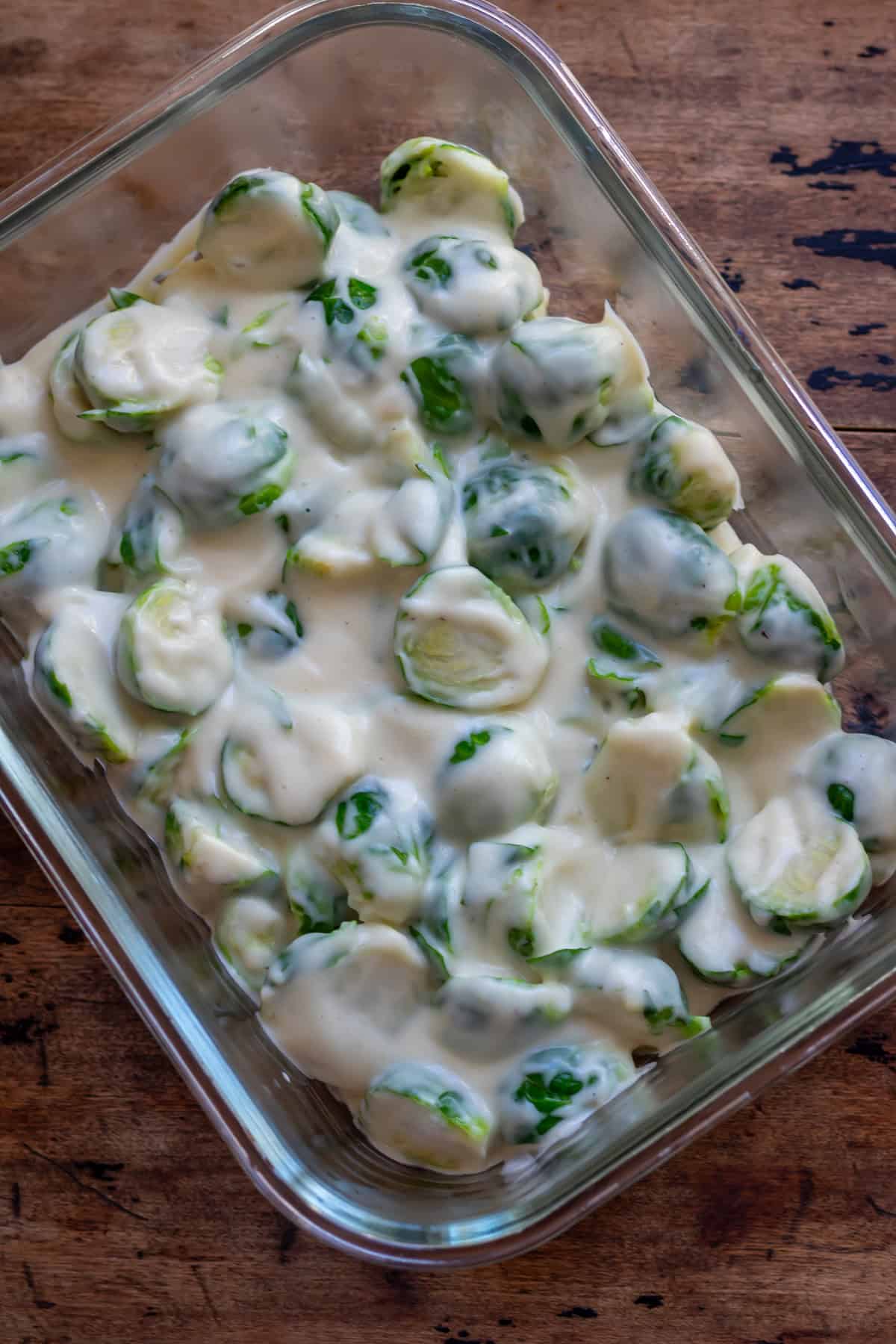
Stir the Brussels sprouts into the cheese sauce, then pour it all into the baking dish.

Mix the breadcrumbs with the sage and remaining cheese, then sprinkle it all on top.
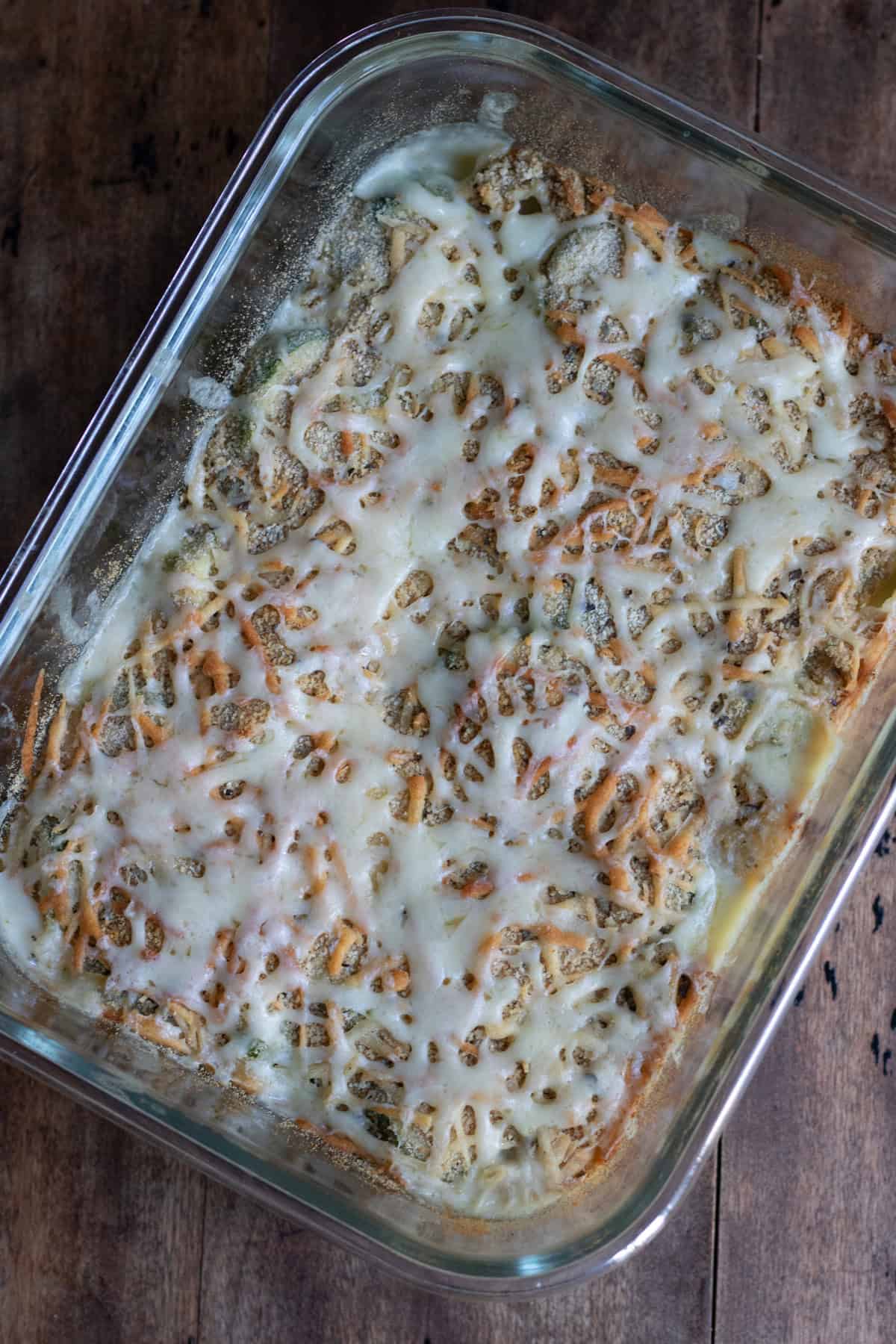
Bake in the oven for 15 minutes or until golden and bubbling.

Variations
- Use Gruyère instead of cheddar for a stronger, nuttier flavor.
- Mix sautéed onions or shallots into the cheese sauce for extra sweetness. Try Slow Cooker Caramelised Onions.
- Stir in a small spoon of whole grain mustard for a grainy texture.
- Add roasted garlic to the sauce for a deeper, mellow flavor.
- Add a handful of cooked potatoes or cauliflower to stretch the dish.
- Mix chopped fresh herbs like parsley or chives into the topping.
Storage
Leftovers keep well in an airtight container in the refrigerator for up to three days. The breadcrumb topping will soften a little, but the flavor remains excellent. Reheat in the oven so the top regains some crispness.
The dish can be assembled ahead of time up to the point where you add the topping. Refrigerate for up to one day, then add the topping and bake when needed.
Freezing works, but the texture becomes slightly softer after thawing. To freeze, cool the dish completely, wrap tightly, and freeze for up to two months. Thaw in the refrigerator overnight and bake until heated through.
Top tips
- Boil the Brussels sprouts just until knife tender to prevent mushy texture.
- Add the milk slowly while whisking to avoid lumps in the sauce.
- Use a shallow baking dish to help the topping brown evenly.
- Grate your own cheese for smoother melting.
FAQs
Cheddar works reliably because it melts smoothly and offers good flavor. Gruyère, Fontina, and a blend of the two also work well.
You can assemble the dish before baking and refrigerate it for up to one day. Wait to add the breadcrumb topping until just before baking.

Sign up for our free newsletter and never miss a recipe!
Plus, you'll get a free eBook: 15 Minute Vegan Dinners!
⭐⭐⭐⭐⭐ If you love this recipe, please leave a five-star rating and review in the comments below! And if you make any modifications, let us know how it went so that we can all benefit from your experience. Happy cooking!
📖 Recipe

Brussels Sprouts au Gratin
Equipment
- Pot
- 8"x10" baking dish
Ingredients
- 450 g Brussels sprouts 1 pound
- 3 tablespoons butter plus extra for greasing
- 3 tablespoons all purpose flour plain flour
- 2 cups milk 450ml
- 1 teaspoon Dijon mustard
- Pinch nutmeg
- 115 g shredded cheddar cheese 1 cup, I used white cheddar
- 5 tablespoons breadcrumbs regular or panko breadcrumbs
- 1 teaspoon dried sage or thyme
- salt and freshly ground black pepper
Instructions
- Preheat the oven to 400°F/200°C. You'll need a baking dish approximately 8"x10".
- Wash the Brussels sprouts and cut away any browned leaves or base. If they're very large, cut them in half or quarters.
- Bring a medium saucepan of water to the boil, add the Brussels sprouts, reduce the heat and simmer for 5-10 minutes or until knife tender. Drain.
- Meanwhile, for the cheese sauce, melt the butter in a medium pan, then stir in the flour and cook for a further minute.
- Whisk in the milk, a little at a time, until thick and creamy.
- Stir in the dijon and nutmeg and half the cheese and season with salt and pepper.
- Stir the Brussels sprouts into the cheese sauce, then pour it all into the baking dish.
- Mix the breadcrumbs with the sage and remaining cheese, then sprinkle it all on top. Bake in the oven for 15 minutes or until golden and bubbling.
Nutrition
The nutritional information provided is approximate and can vary depending on several factors, so is not guaranteed to be accurate. Please see a registered dietician for special diet advice.

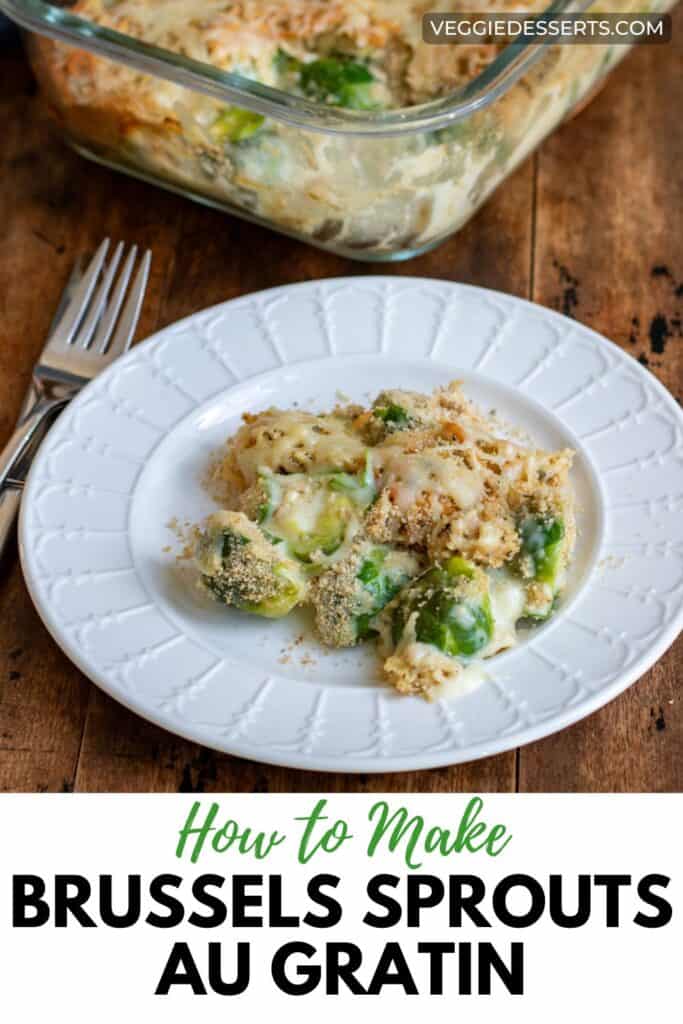

Comments
No Comments